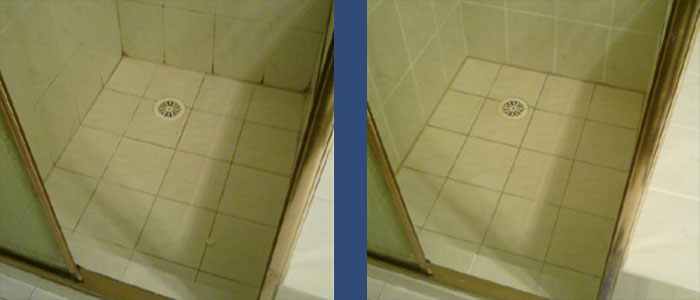The article author is making several great pointers on the subject of Common Causes of Water Damage in a Bathroom as a whole in this article followed below.

The bathroom is extremely vulnerable for wet buildup and potential water damages as a result of the constant use water in it. This post provides easy inspection strategies to aid finding water damage dangers.
The constant use water in the shower room makes it incredibly susceptible for moist accumulation and also possible water damages. By checking it consistently, you can reduce water related damages.
The following set of evaluations is easy to perform and also need to be done as soon as in every 3 months in order to maintain your washroom healthy and also to avoid potential water damages brought on by the tub, the shower, pipe joints and plumbing, sinks, closets, and also the bathroom
Do not overlook performing these evaluations and be detailed while executing them. Bear in mind that these easy inspections can conserve you a lot of money by supplying very early indicators for water damage
Bath tub as well as Shower
The shower as well as bathtub call for special focus as well as maintenance. Check the tiles and also change if broken. Make sure that there is no missing out on grout between the ceramic tiles. Examine and change split caulking at joints where the walls meet the flooring or the tub. Clogged drains as well as pipes troubles will certainly avoid the bathtub from drying out as well as may show major problems under the tub. Consult with a specialist right away to prevent architectural damages. Focus on discolorations or soft locations around the tub walls as they might indicate an inner leak.
Plumbing
Signs for water damages are difficult to detect given that most pipelines are installed inside the wall surfaces.
Pay special focus to flooring and also walls moisture as well as stains as they might indicate an undetectable plumbing problem. Examine dampness levels in adjacent rooms too.
Sinks and Cabinets
Sinks and also closets are subjected to dampness as well as moisture daily and also are frequently forgotten. Inspect on a regular basis under the sink and on the counter top over it. Repair any kind of drip in the trap as it may recommend drain issues. Check out the sink, sluggish draining pipelines might indicate a blocked drain. Change sink seals if they are fractured or loose.
The Bathroom
The bathroom is an at risk water junction. Check the water lines as well as search for leakages around the commode seat, in the tube, and under the water storage tank. If you discover any kind of indicators of moisture on the floor around the bathroom, check for leakages in the toilet edge and also container seals.
Realize that hanging commode dish antiperspirants increases the chances for blockages.
TIPS TO PREVENT WATER DAMAGE IN THE BATHROOM
The average household uses approximately 80-100 gallons of water per person per day. For a family of 4, that's almost 2,500 gallons of water a week! The largest portion of this consumption comes from bathroom use. Flushing the toilet uses the most water, followed by taking a shower or bath. With that much water running through the home, water damage in the bathroom is bound to happen. Knowing how to spot signs of a water leak is essential to preventing long-term damage. This guide provides you with tips to reduce the impact of water damage on your bathroom.
CAUSES OF BATHROOM WATER DAMAGE
Pipe breaks are the most common cause of water damage we see in our daily jobs. The age of a pipe plays a large role in a pipe break as well as corrosion. Over time, the metal begins to break down, allowing water to escape. Frozen pipe breaks are also a concern in the winter months. Toilet overflows caused by paper products or children flushing inappropriate items. Degraded caulking around the toilet or bathtub can allow water seepage, sometimes behind the fixture, into the subfloor or walls. Condensation forms when the water in a pipe is cooler than the air temperature. Beads of water form on the exterior of the pipes, sometimes so much so that the water begins to drip and pool below. Sink or shower backups created by poor drainage. HOW TO PREVENT WATER DAMAGE IN YOUR BATHROOM
Inspect your toilet supply line for worn or frayed hoses and replace them as needed. Winterize your plumbing to prevent a frozen pipe break. Use vent fans to prevent condensation that can lead to mold growth. Routinely check and replace degraded caulking around your toilet or bathtub. Increase the temperature in your toilet tank and insulate your pipes during the warm summer months to keep condensation from forming. Use child safety locks on the toilets. Flush only toilet paper. "Flushable" wet wipes are actually not good for your plumbing system. Additionally, feminine hygiene products should not be flushed. Prevent water from escaping the tub or shower. Make sure shower curtains are in good condition. Inspect shower doors and replace the seal strip if necessary. Wipe up any water that accumulates on the floor and use bath mats. Water left to sit can cause damage to the tiles and flooring. Refrain from using bath products containing heavy oils to avoid a clogged drain.

Hopefully you enjoyed reading our topic on Looking for Signs of Water Damage in the Bathroom. Many thanks for spending some time to read through our article. Please set aside a second to distribute this page if you enjoyed reading it. Thanks a lot for your time. Come back soon.
Get An Estimate